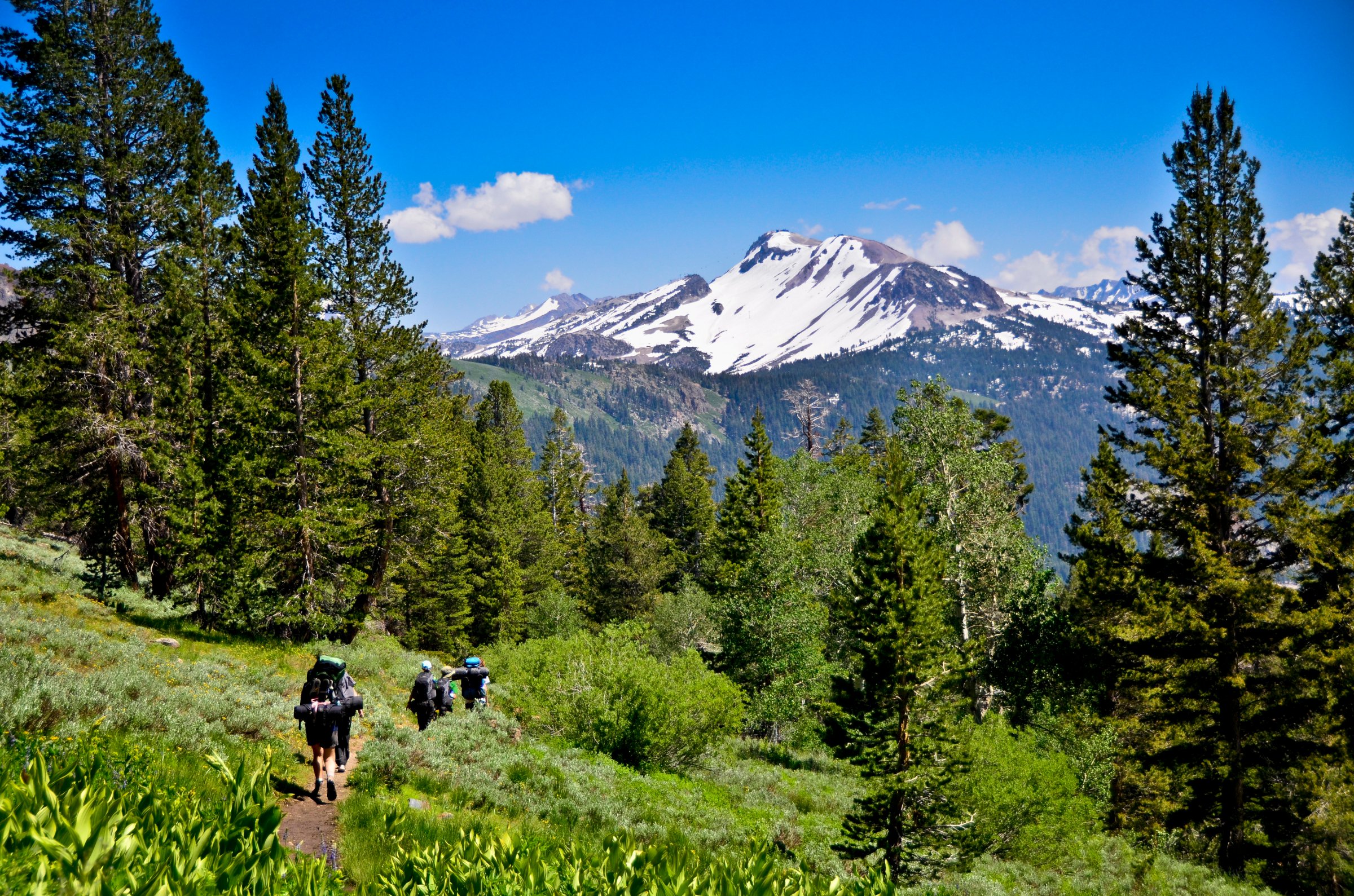
Wild, a film based on Cheryl Strayed’s bestselling memoir, in theaters Dec. 5, tells the tale of a woman wandering over more than 1,000 miles of the Pacific Crest Trail. And that means one of star Reese Witherspoon’s most important co-stars is the trail itself.
Today there are more than 1,000 official national trails that sprawl across America like a nervous system. But in the beginning there were just two: the Appalachian Trail and the Pacific Crest Trail. The latter, spanning about 2,650 miles of America’s West Coast, from Mexico to Canada, was the dream of a fellow named Clinton Clarke. In 1932, the avid hiker formally proposed a border-to-border trail connecting the peaks of the Pacific Coast, to preserve and protect America’s “absolute wilderness” before it was overrun by “motor cars” and industry.
“In few regions of the world—certainly nowhere else in the United States,” he later wrote in 1945, “are found such a varied and priceless collection of the sculptured masterpieces of Nature as adorn, strung like pearls, the mountain ranges of Washington, Oregon and California.” The Pacific Crest Trail, he said, “is the cord that binds this necklace.”
Clarke’s hero, and cause, was the explorer who would pitch his or her tent in the mountains night after night, desperate to hear the snowfall and see nothing brighter than the stars, seeking a “simpler and more natural life.” He believed that the “PCT” wasn’t just some track of dirt, but a means of forging “sturdy bodies,” “sound minds,” “permanent endurance,” “moral stamina” and “patriotic citizenship.” (As if it needed to be mentioned, Clarke was a dedicated Boy Scout.)
Clarke wasn’t the only person to dream of such a trail, but he was the most organized. To further the cause, he put together a whole federation of hiking clubs and youth groups dedicated to the project, known the Pacific Crest Trail System Conference. For years, he oversaw the massive task of scouting and constructing a route through the wilderness, connecting existing trails by building new ones, all while avoiding as much settled area as possible. Clarke served as the president of the conference for 25 years, which included big-name members like the Sierra Club, YMCA and photographer Ansel Adams. For this, he earned his place in history as the “father” of the trail.
The Pacific Crest Trail officially became the Pacific Crest National Scenic Trail in 1968, 11 years after Clarke died at the age of 84. The popularity of hiking had been growing and, as of 1963, America had a President and First Lady who were very interested in preserving the outdoors: Lyndon and Lady Bird Johnson. Johnson proposed the study of a national system of trails, which would give the federal government a way to establish and oversee footpaths that weren’t on federal land. The volunteers who oversaw the Appalachian Trail were anxious for that kind of mandate, worried that handshake agreements allowing hikers to pass through private lands might otherwise dry up.
People like the Department of the Interior’s Daniel M. Ogden, who recounts the political battle for establishing a national system of trails in a 40th anniversary newsletter, pushed Congress to pass a bill based on the study Johnson requested. And Oct. 2, 1968, Johnson signed a “conservation grand slam” of four environmental measures: the National Trails System Act, the Wild and Scenic Rivers Act, the Redwood National Park Act, and the North Cascades National Park Act. The only two national scenic trails at the time, which require an act of Congress to be designated, were the Appalachian and the Pacific Crest.
By 1972, a council created by the government had come up with a final route for the trail that Clarke had imagined 40 years earlier. After years of construction and negotiation with private property owners, the trail was completed in 1993 with a “golden spike” ceremony reminiscent of the transcontinental railroad. That was also the year that the non-profit Pacific Crest Trail Association forged a partnership with the federal government to oversee and keep up the trail.
Many people have since completed the whole-hog, end-to-end trek. Others, like Cheryl Strayed, have settled for three-month, 1,100-mile adventures. So long as the hikers come out a little different on the other side, they should all be satisfying Clarke’s wish for what the trail would be. “It is simply a ‘track worn through the wilderness,'” he wrote in 1945, “for hardy adventurers who can enjoy the experience and benefits of a friendly struggle with Mother Nature.”
More Must-Reads from TIME
- Donald Trump Is TIME's 2024 Person of the Year
- Why We Chose Trump as Person of the Year
- Is Intermittent Fasting Good or Bad for You?
- The 100 Must-Read Books of 2024
- The 20 Best Christmas TV Episodes
- Column: If Optimism Feels Ridiculous Now, Try Hope
- The Future of Climate Action Is Trade Policy
- Merle Bombardieri Is Helping People Make the Baby Decision
Contact us at letters@time.com